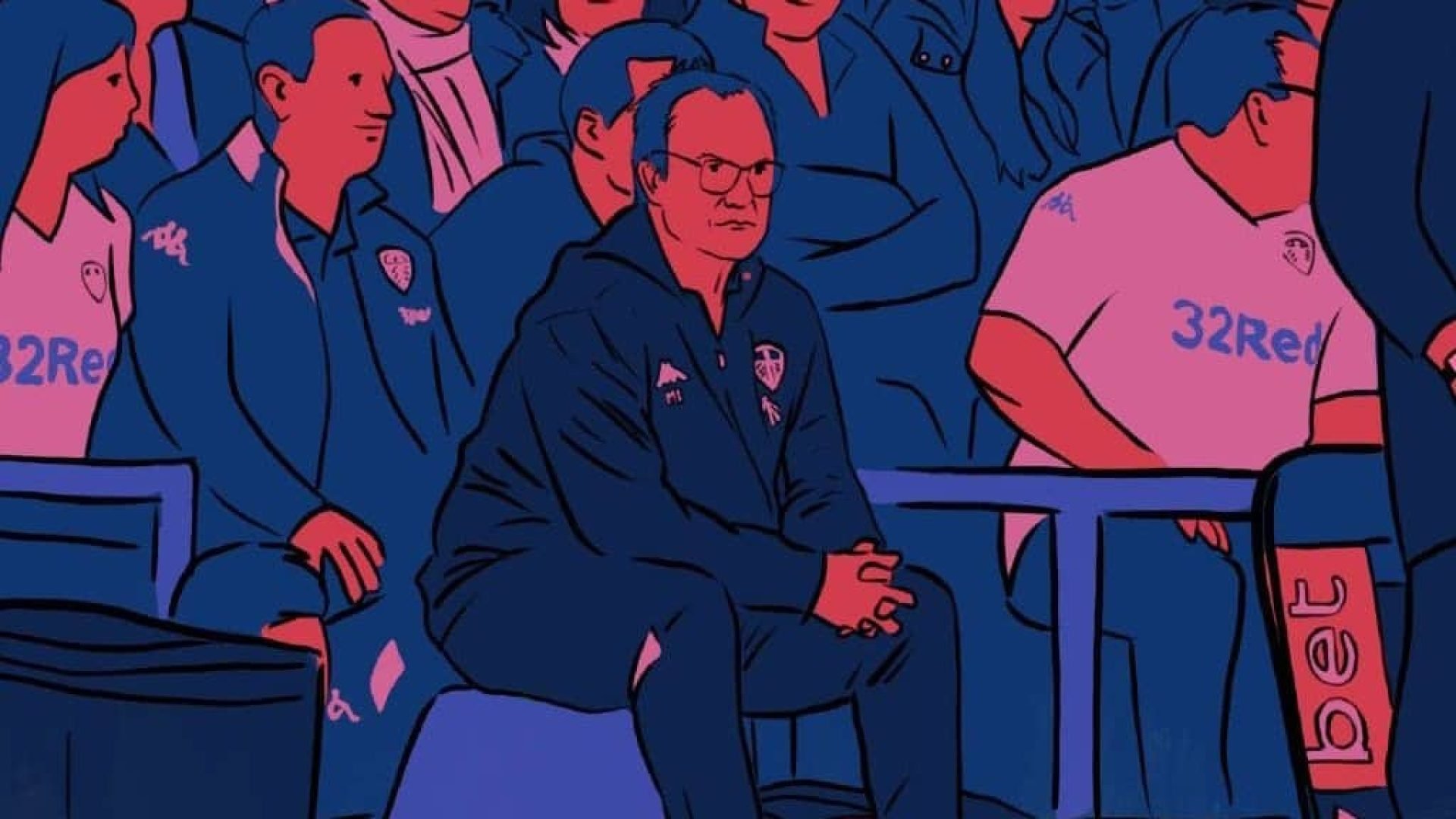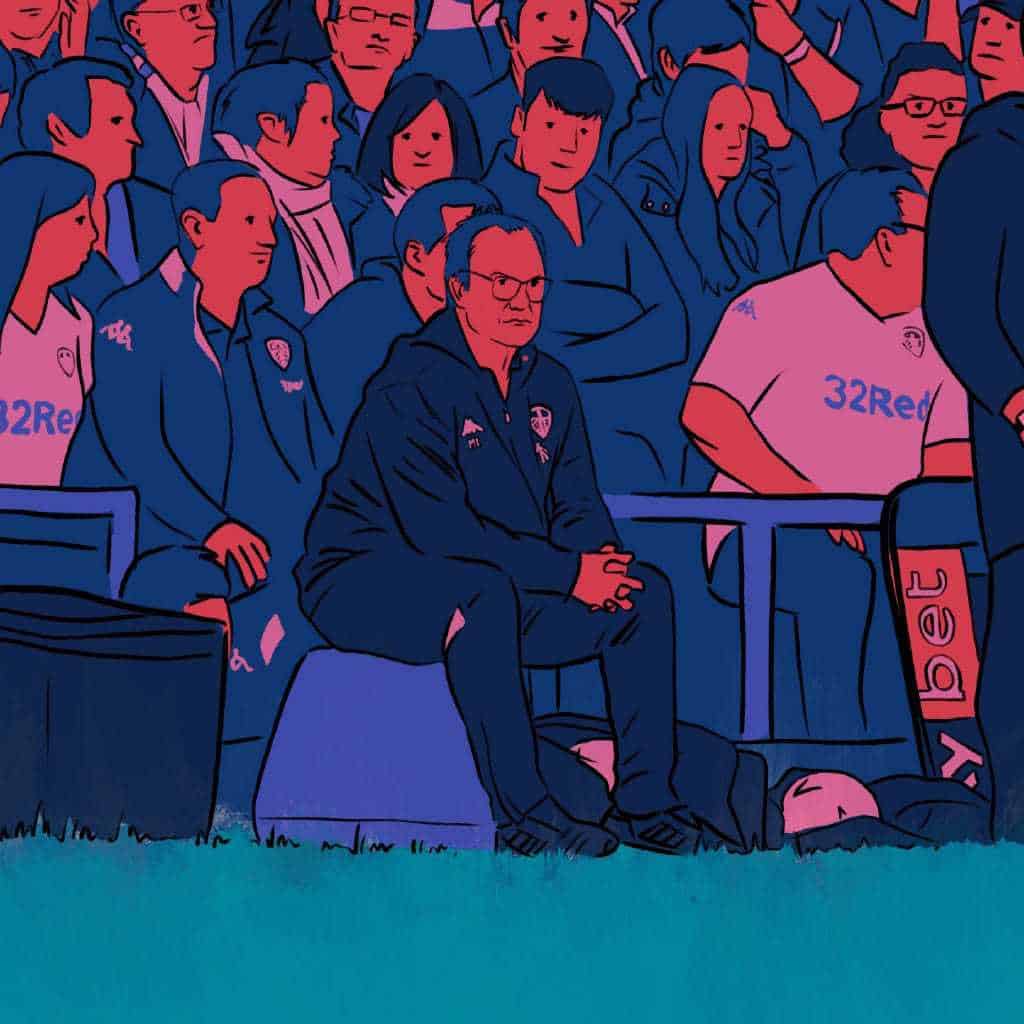
Art and football have often shared an uneasy relationship, when they have shared any relationship at all. They each have their respective theatres, the stadium and the gallery, and historically, their respective audiences. While the working class filed to the framed field of green in their industrialised heartlands, the upper classes would prefer the Monet occupying a Victorian building in the city centre. And never the twain shall meet (to the relief of each).
Or at least, that’s how things generally played out in the north of England. However, as Alan Brazil won’t let us forget (even as his surname sings for a South American sun), Marcelo Bielsa isn’t British.

Contemporary art could afford to be irrelevant to the working class of post-war Britain — the war had been won, and as long as paintings were bought and sold, the market could sustain itself with or without the blessing of any ‘vile animals’. However, while operating against a succession of increasingly oppressive dictators throughout the 1960s, art in Argentina, and particularly in Bielsa’s Rosario district, was necessarily violent and antagonistic; the public were dared to interrupt art, in order to unmask the aggression of the political regimes, and to rehearse the gestures of a revolution.
As the art historian Claire Bishop writes, in November 1966 the Argentine intellectual Oscar Masotta lined up twenty elderly members of the public against a wall, and subjected them to a barrage of fire-extinguisher foam, deafening high-pitch noise, and blinding white light.
Meanwhile, the exiled Brazilian director Augusto Boal devised semi-staged theatre for restaurants throughout Buenos Aires, during which an ‘actor’ would order and enjoy a two-course meal, before loudly declaring themselves too poor to pay the bill. At this point, similarly masquerading diners would leap out of their seats and direct exaggerated anger or sympathy towards the ‘actor’, as a means of eliciting responses and action from the surrounding members of the ‘real’ public.
And in Montevideo, the artist Marta Minujín used a motorcycle gang to herd hundreds of working-class members of the the local community onto the pitch of Peñarol’s football stadium, before locking the gates and commandeering a helicopter, from which the unsuspecting ‘audience’ on the field were pelted with huge quantities of flour, lettuce, and 500 live chickens.
However, it was in Rosario during the 1960s, while a teenage Marcelo cut his teeth on the way to his beloved Newell’s first team, where antagonistic art found its most dynamic platform.
‘The Cycle of Experimental Art’ was held in Rosario during 1968, and presented interactive events every fifteen days, in order to replicate hostile situations that were only tolerated by the public in their everyday life because these circumstances were handed down to them by figures of authority. Naturally, these provocative interventions became increasingly radical, and the ninth event resulted in a semi-simulated street fight that required mediation from the public in order for the attack to stop. However, it was the tenth event that became the most notorious.
Graciela Carnevale, on the anniversary of Che Guevara’s death, staged an exhibition opening in an unoccupied art gallery. Once the public were assembled, they were ushered into an empty glass room, imprisoned, and left to their own devices without any means of escape. Over time, excitement and light-heartedness turned to trepidation, nervousness, and ultimately frustration. A passing member of the public eventually noticed the scene, broke the glass, and the police arrived as the freed audience stumbled out of their shattered enclosure. Unsurprisingly, the Cycle of Experimental Art was subsequently outlawed.
While it would be odd to draw comparisons between Don Revie’s ‘Dirty Leeds’ team and the fairly benign works of David Hockney, perhaps it is less far-fetched to sit Bielsa’s Leeds against the backdrop of dissident Argentinian art, revolutions, and dictatorships that framed his teenage years.
Like the post-war artists of Argentina, ‘El Loco’ is frequently cast as a provocateur, often to his own bemusement. A regularly-repeated legend recounts how a pyjama-clad Marcelo once confronted a group of Newells’ ultras with a grenade in his hand, before chasing them away from his home as he dared them to continue the conversation.
The ‘Spygate’ scandal, tedious and unwitting as it was, triggered the kind of mass-hysteria that British radical art can only dream of, as dewy-eyed managers, flailing in a sea of gambling advertisements and ‘sport-washing’ accusations, scrambled to lecture on the ethics of English football. Meanwhile, on the pitch, Bielsa’s lieutenants, Messrs. Klich and Alioski — commendably carry out cuter duties in the name of shithousery, and the intricacies of Bielsa-ball have generally tempted a long-suffering fan base out of its stupor. Incidentally, there probably isn’t a seat in the stadium where a supporter can sit safely out of range from the onslaught of wayward shooting that has accompanied several United games under Bielsa.
None of this is necessarily intended to paint Bielsa as an artist, though he may as well be one. More concrete are the similarities between Argentinian art and Bielsa’s teams — both are abrasive and confrontational, and they each act as prototypes which allow for the rehearsal of a revolution. While the radicals of Rosario ultimately wished to overthrow an oppressive government, perhaps Bielsa dares us to change football — and in that respect it is no coincidence that many of his siblings have recently found themselves shaping government policy in Argentina. If this is the case, then let the sirens sound, light the fiery floodlights, and hear the bugle call out over the streets of Beeston — ‘viva la revolución’. ◉
(This article was published in TSB 2019/20 issue 07 and is free to read as part of TSB Goes Latin.)
(Every magazine online, every podcast ad-free. Click here to find out how to support us with TSB+)© 2009-2023 The Square Ball Media Limited | All Rights Reserved | Contact us